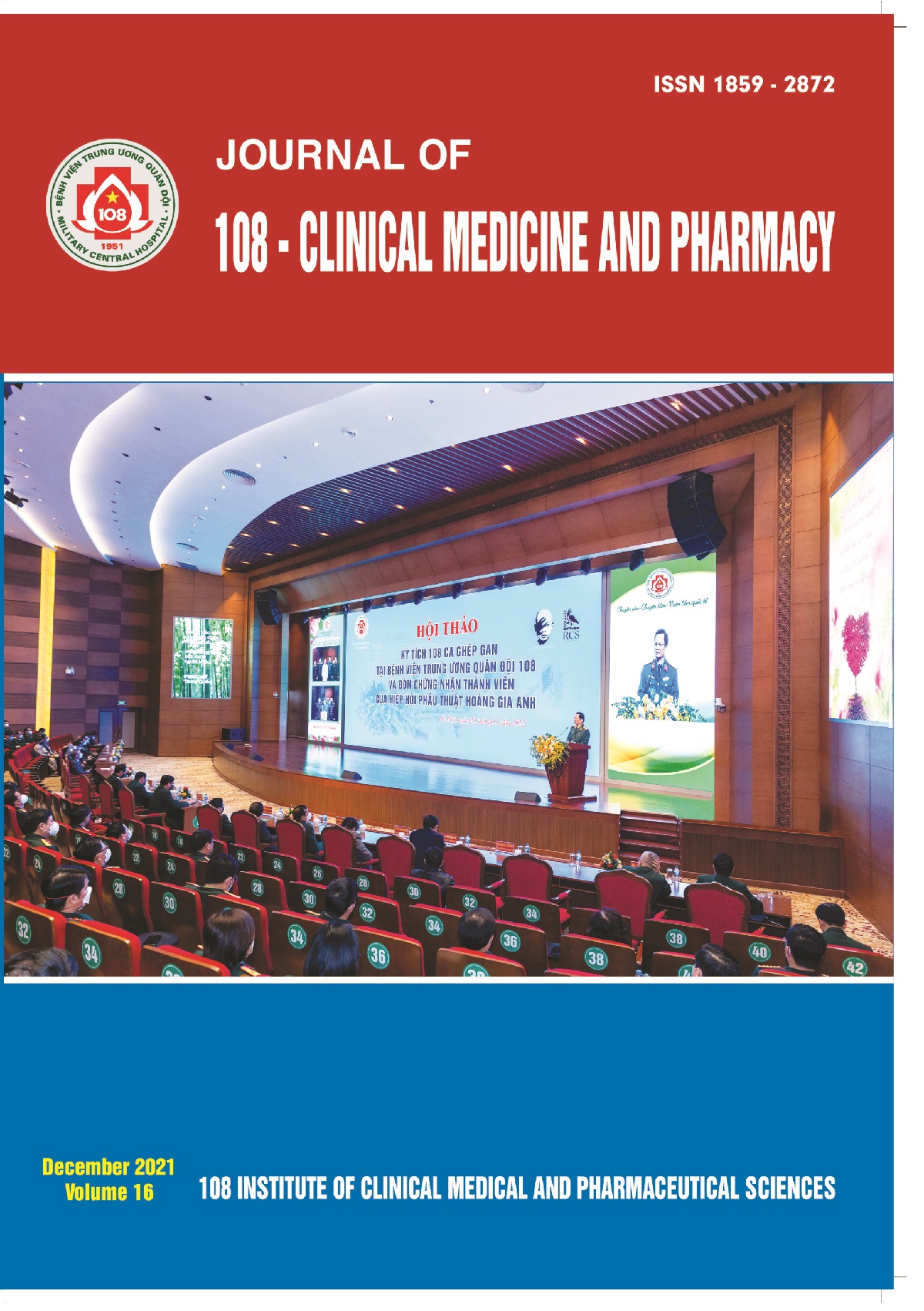Initial evaluation of pain relief efficacy of ultrasound-guided selective nerve root injection with corticosteroid in the treatment of cervical disc herniation
Main Article Content
Keywords
Tóm tắt
Objective: To evaluate the pain relief efficacy of selective nerve root injection with corticosteroid under ultrasound’s guidance in the treatment of the cervical disc herniation and its complications. Subject and method: The study was conducted with 20 cervical disc herniation patients in the Center of Multidisciplinary Consultation and Treatment, 108 Military Central Hospital from February 2021 to May 2021. All included patients were examined and performed the first injection, then observed for 2 hours after the procedure. The second injection would be indicated if the first one was not able to relieve 50% of pain at each time points of study. The time points of study were T0, T1, T2, T3 according to before, at a time, and after intervention 2 weeks and 4 weeks. The researched outcomes were vital signs, general status, Numeric Rating Scale (NRS, for pain assessment), and complications. Result: The average age of subjects was 54.75 ± 12.07 years old. Gender ratio (male/female) was 1.22. The most common herniated level was C5-C6 (90%), mainly right orientation (67%). The most frequent compressed nerve root was C6 right (67%). The NRS score at the time points after intervention significantly reduced, and this favorable outcome steadily maintained (p<0.05). The most popular complication was the parasympathetic reflex (10%), it gradually disappeared with conservative care. There was no severe complication. Conclusion: The selective nerve root injection with corticosteroid under ultrasound’s guidance in the treatment of cervical disc herniation is the acceptably safe and effective management.
Article Details
Các tài liệu tham khảo
2. Kim S (2015) A new MRI grading system for cervical foraminal stenosis based on axial T2-weighted images. Korean Journal of radiology 16(6): 1294-1302.
3. Jee H (2013) Ultrasound-guided selective nerve root block versus fluoroscopy-guided transforaminal block for the treatment of radicular pain in the lower cervical spine: A randomized, blinded, controlled study. Skeletal radiology 42(1): 69-78.
4. Jang JH (2020) Ultrasound-guided selective nerve root block versus fluoroscopy-guided interlaminar epidural block versus fluoroscopy-guided transforaminal epidural block for the treatment of radicular pain in the lower cervical spine: A retrospective comparative study. Pain Research and Management.
5. Huston CW, Slipman CW, and Garvin C (2005) Complications and side effects of cervical and lumbosacral selective nerve root injections. Archives of physical medicine and rehabilitation 86(2): 277-283.
6. Pobiel R (2009) Selective cervical nerve root blockade: Prospective study of immediate and longer term complications. American journal of neuroradiology 30(3): 507-511.
 ISSN: 1859 - 2872
ISSN: 1859 - 2872
